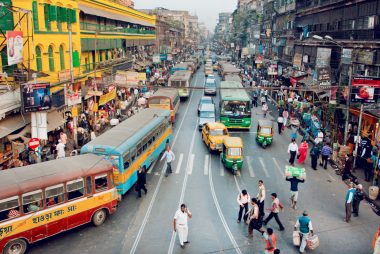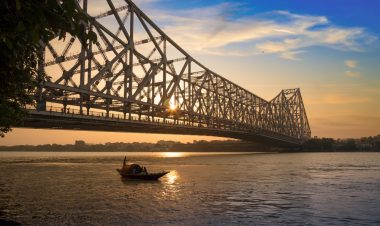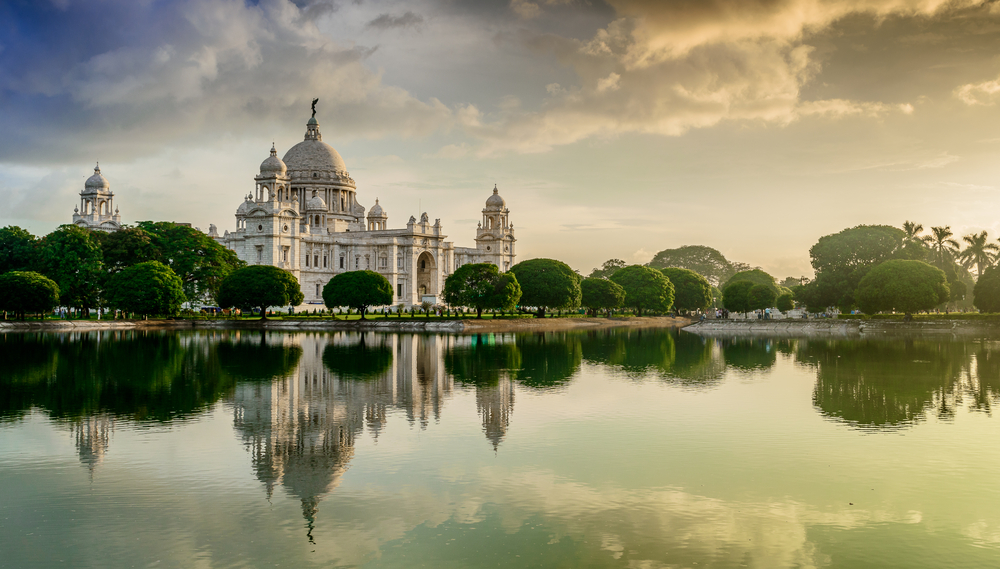West of the huge Ganges-Brahmaputra Delta, on the border with Bangladesh, lies the Calcutta conurbation in India. In the actual city center, where just 12,000 people lived 300 years ago, today 4.5 million inhabitants are crowded into a very small space. Busy streets with colorful flower markets, colonial buildings of the former British Empire, slums without water connection and opposite headquarters of Indian corporations, these impressions are the first things that strike the city visitor.
Kolkata is not particularly fixated on tourists. For the administration, the focus is on social and structural challenges arising from the current strong economic growth. The lack of highly-styled tourist attractions makes the city particularly authentic and offers the traveler a real, unvarnished insight into Indian culture and way of life.
Refreshing air comes with the monsoon
Spring, which is so popular in Europe, is the worst season for a trip to West Bengal. In the West Bengal capital Calcutta, there is a stifling heat during this time, with temperatures of up to 36 degrees in the shade. In addition, a layer of industrial exhaust fumes and the smell of gasoline hangs over the city. With the end of spring, the relieving monsoon rains begin in June. Two or three times a day it pours down as if from buckets. Mud forms on the streets. In the center, where bicycle rickshaws are not allowed, the rickshaw drivers pull their vehicle through the mud by hand and charge a higher fare.

The advantages of the monsoon outweigh the disadvantages. The agricultural areas on the outskirts of the city absolutely need the rain. The air above the agglomeration begins to cool down. The particulate matter is flushed down, the air becomes fresher, the buildings cleaner. Two months after the end of the monsoon rains, mid-October is the most recommended time for a city trip. Until at least the end of January, air quality and climate will remain rather pleasant. By the way, Kolkata does not only have rickshaws to offer for getting around the city. The fastest way to get there is by metro. It is clean and reliable, but unfortunately the network is only 17 km long. An adventurous ride in one of the yellow taxis also has something, so you get to see the daily urban traffic chaos and honking concert up close. Then there is the electric tram, an absolute rarity in India.
Migration on the Haora Bridge and the Indian Museum
Worth seeing and a hallmark of Calcutta is the Rabindra Setu, also known as the Haora Bridge or Howrah Bridge, named after a Bengali poet. It is one of the largest cantilever bridges and is considered the busiest river crossing in the world. Two million commuters cross the bank on the metal half-timbered building every day. The brownish water of the mighty Hugli River, an estuary arm of the Ganges, flows under the bridge. Many city dwellers take water from the holy river for cooking, or they bathe in it with their clothes.
The Nelson Mandela Garden on Sudder Street is home to the well-known Indian Museum. The very old house complex is laid out with arcades around a central courtyard and houses a remarkable hodgepodge of exhibits from Indian culture. In the high halls, which are supervised by barefoot, half-asleep locals on plastic chairs, there are sculptures of gods and their incarnations. Remains of Buddhist stupas and many paintings by Indian artists can also be admired. Fish, fossils and exhibited monstrosities of animals such as a young goat with eight legs preserved with formaldehyde are in a rather questionable condition.
Calcutta – In the footsteps of St. Mother Teresa

The media have often mentioned Calcutta in the West when reporting on the work of Sister Bojaxhiu. She is better known as Mother Teresa and was a nun from Europe. For her selfless support of the poor and sick, she received the Nobel Peace Prize. Mother Teresa spoke Bengali fluently and had taken Indian citizenship after Indian independence. The community of missionaries dressed in white and blue that she founded is now active in over a hundred countries. In Calcutta, the grave of Mother Teresa and a small exhibition on her work can be visited in the quiet monastery “Motherhouse of the Missionaries of Charity” (barefoot only).
Especially in the evening hours, the traveller still sees hundreds of homeless and poor people in many parts of Calcutta, and the problem has lost none of its explosiveness. However, the locals do not think that their city is particularly poor. In fact, the same tragedy is found to the same extent in many Indian cities.
Parks, people with a sunny disposition and cultural avant-garde
The facades of the city and the shops are often upgraded by the residents with floral decorations. Many merchants with huge baskets full of flowers on their heads balance through the alleys. The floral splendour is also delivered for ceremonies and social occasions. There are also plants and nature to see in the parks. There is the huge Maidan Park, which goes back to a forest clearing by British officers. Not only the ever-popular cricket is played in the park, but also football. Kolkata could actually be called the Indian capital of football.
Everywhere in Kolkata you meet cheerful and laughing people. Kolkata is also home to many intellectual masterminds and well-known artists from films and plays. If you visit the city at the right time in October, you can enjoy the five-day festival Durga Puja. With much singing, dancing and pomp, the goddess of perfection is worshipped. This cultural event brings part of the traffic to a standstill. The festival is one of many extraordinary impressions that Calcutta can give the guest for the journey back to his homeland.
Important information about Kolkata
- Historical significance: Calcutta was founded in 1690 by the British East India Company as a trading post and served as the capital of British India from 1772 to 1911. The city played a central role in India’s modern political and cultural history.
- Cultural Centre: Calcutta is considered the cultural heart of India and has a rich tradition in literature, art, theatre and film. Famous personalities such as the poet and Nobel Prize winner Rabindranath Tagore, the filmmaker Satyajit Ray and the musician Ravi Shankar hail from this city.
- Population and Economy: Kolkata is one of the largest cities in India with an estimated population of over 14 million people in the metropolitan area. The city’s economy is diverse, with strong sectors in commerce, finance, education, entertainment, and a significant port.
- Education and Research: The city is an important educational center in India, home to many prestigious institutions such as the University of Calcutta, the Indian Statistical Institute, and several other research institutions.
- Architecture and sights: Kolkata has a mix of colonial architecture and modern buildings. Some of the most famous sights include the Victoria Memorial, Howrah Bridge, Kalighat Kali Temple and the Eden Gardens Cricket Ground.
- Social challenges: Despite its cultural richness and historical significance, Kolkata faces numerous social and economic challenges, including poverty, overpopulation, and environmental issues.
- Transportation: The city has an extensive public transportation system that includes subways, buses, trams, and trains. Kolkata was the first city in South Asia to introduce a metro.


